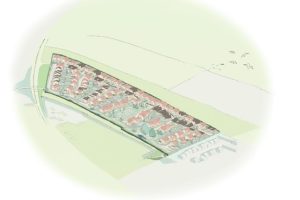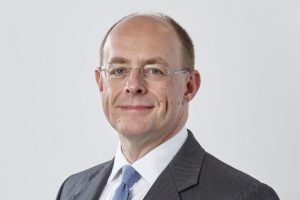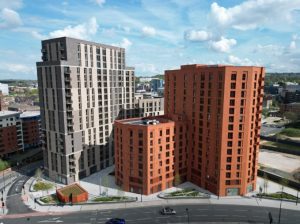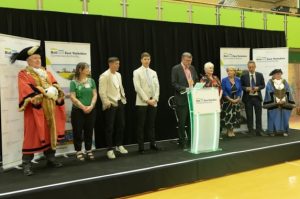Leeds City Region Week: Culture key to economic growth

THE Leeds City Region can learn lessons from one of the world’s greatest cultural cities, Barcelona, according to one of the leading figures running the Catalan city.
Mario Rubert, managing director of international economic relations for Barcelona City Council, said the city had grown tourism numbers from two million a year when the city hosted the Olympic Games in 1992 to 14m today.
Speaking at an event this morning at international property conference MIPIM and organised by the Leeds City Region delegation, Mr Rubert told the audience how towns and cities across the region should ensure their citizens are all “ambassadors” and promote the cultural strengths of the areas they live in.
Mr Rubert said it was also important for the different locations sitting within the Leeds City Region to promote the region’s cultural assets, rather than just their own, and to change perceptions.
Other panellists at the event, entitled ‘Creating a Culture of Growth’, were Martin Farrington, director of city development for Leeds City Council, Andrew Wallhead, corporate director, regeneration, culture and sport at Wakefield Council, and Paula Dillon, director, Opera North, and property partner at law firm Addleshaw Goddard.
The debate was chaired by David Parkin, Editor of TheBusinessDesk.com.
Mr Rubert said: “Twenty-five years ago when you asked people about Barcelona they said it was a place known for sun, the King of Spain, fiestas and siestas.
“The perception today is of a city of tourism, creativity, architecture and culture.”
The audience raised the question of whether the Leeds city region needed a major set piece event to put it on the global map.
Ms Dillon said the region already had the Leeds Music Festival and Mr Farrington said the Leeds Arena, which is currently being built, was “unique” and would help achieve that goal.
Mr Rubert said a significant part of the success of Barcelona’s cultural strategy had been fostered by a positive working relationship between the public and private sectors.
He said the Olympics had been a successful set piece event but the private sector’s investment in promoting Barcelona’s cultural assets had increased more than 20-fold to 23m euros over the last 20 years compared to an investment from the council of just 1m euros.
Mr Farrington said he believed the public and private sector could work more closely within the Leeds City Region and that steps were being taken to achieve that.
He described the region’s cultural assets as its “great DNA” and said: “It’s important we all work together with all our assets as there’s great opportunities to help the Leeds City Region buck the trend a bit and create investment opportunities for the future.”
Ms Dillon, who said having a Premier League football team in Yorkshire would enhance the region’s cultural offer, added: “It’s important for all locations to work together and make the experience for people coming to the region as diverse as possible. If you broaden the opportunities you’ll broaden the net.”
Mr Wallhead hailed what Wakefield had to offer and said the forthcoming openings of the Hepworth Gallery and the Trinity Walk shopping scheme would greatly benefit the region.
He said: “We need to carry on with what we’ve been doing across the Leeds City Region but we perhaps do need to understand more what is our offer and also understand about the demand side.
“We’re not going to get the next Olympics but we have got some of the best facilities in the UK and world and that’s where we’re going to get the growth.”
Speaking from the audience, Stephen Talboys, director of regeneration, city centre, at Bradford Council, called for an “asset audit” to be introduced to enable the different city region partners to promote each others’ cultural hotspots.








